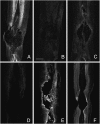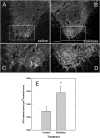Sialidase enhances recovery from spinal cord contusion injury
- PMID: 20534525
- PMCID: PMC2895144
- DOI: 10.1073/pnas.1006683107
Sialidase enhances recovery from spinal cord contusion injury
Abstract
Axons fail to regenerate in the injured spinal cord, limiting motor and autonomic recovery and contributing to long-term morbidity. Endogenous inhibitors, including those on residual myelin, contribute to regeneration failure. One inhibitor, myelin-associated glycoprotein (MAG), binds to sialoglycans and other receptors on axons. MAG inhibition of axon outgrowth in some neurons is reversed by treatment with sialidase, an enzyme that hydrolyzes sialic acids and eliminates MAG-sialoglycan binding. We delivered recombinant sialidase intrathecally to rats following a spinal cord contusive injury. Sialidase (or saline solution) was infused to the injury site continuously for 2 wk and then motor behavior, autonomic physiology, and anatomic outcomes were determined 3 wk later. Sialidase treatment significantly enhanced hindlimb motor function, improved bulbospinally mediated autonomic reflexes, and increased axon sprouting. These findings validate sialoglycans as therapeutic targets and sialidase as a candidate therapy for spinal cord injury.
Conflict of interest statement
The authors declare no conflict of interest.
Figures




References
-
- Sandvig A, Berry M, Barrett LB, Butt A, Logan A. Myelin-, reactive glia-, and scar-derived CNS axon growth inhibitors: Expression, receptor signaling, and correlation with axon regeneration. Glia. 2004;46:225–251. - PubMed
-
- Cao Z, et al. Receptors for myelin inhibitors: Structures and therapeutic opportunities. Mol Cell Neurosci. 2010;43:1–14. - PubMed
-
- Fawcett JW. Overcoming inhibition in the damaged spinal cord. J Neurotrauma. 2006;23:371–383. - PubMed
Publication types
MeSH terms
Substances
Grants and funding
LinkOut - more resources
Full Text Sources
Medical
Research Materials

